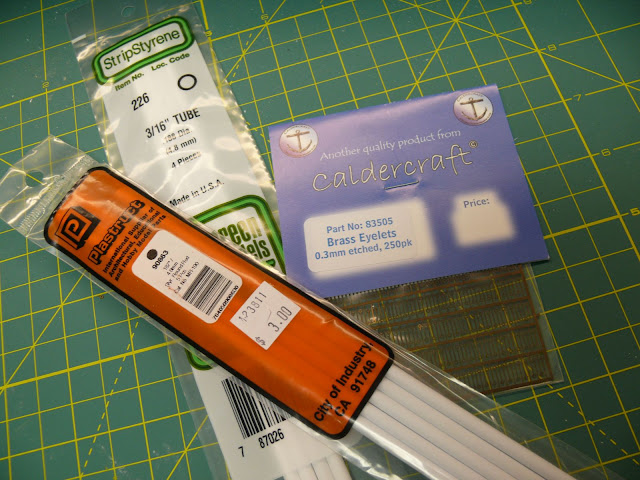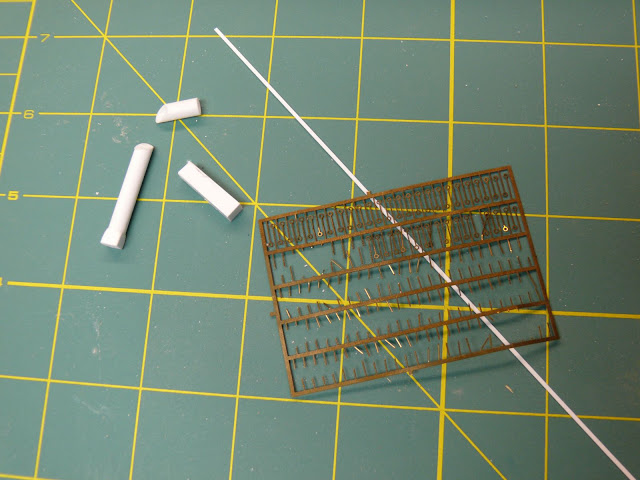Here is a bit more progress...
I'm not thrilled with the kit provided galley funnel (later called the "Charlie Noble"). It's not bad, but not good either. It is easily dismissed or overlooked on the foredeck.
The Hull model shows us a short and stocky version:

This is the way to go if I want to be strict with my sources and true to the most historical representation of her August 19, 1812 configuration. But here is where I may exercise some artistic license. If I lay out the boats in the OOB configuration, then this funnel points directly into the butt end of the stored cutter that spans the skids and foredeck. And I've seen several models of ships in this period that display a taller funnel. Even the restored ship today has a much taller Charlie Noble. This, I think, may be an opportunity to utilize something from the AOTS book that adds a bit more interest to this part of the deck. Perhaps not entirely accurate, but what the heck (and maybe I abuse Marquardt too much and should at least acknowledge his version of the ship in this small way).
Here are the raw materials; .188 dia. solid rod styrene (Plastruct 90863), .188 dia.tube styrene (Evergreen 196), .188 x .188 styrene (Evergreen 196), some very narrow/thin styrene strip, and the wonderful Jotika .3mm PE brass eyelets.

I glued a hunk of the Evergreen 196 to the base of the solid rod and then shaped the corners with a small file to blend the pieces. Then I cut the 45 degree angle in both the solid rod and the tube and glued them together.

Finally I wrapped the funnel with some narrow styrene and added some eyelet "tie downs" around the perimeter.
The end result:

The baffle plate was easily made - I added a common paper hole punch to my tool box and snipped out a few discs from some thin and wide styrene strips.
Certainly a more interesting element than the alternative. Later I'll add the baffle plate and some small tackle to hold the funnel stable in a heavy breeze.
EG